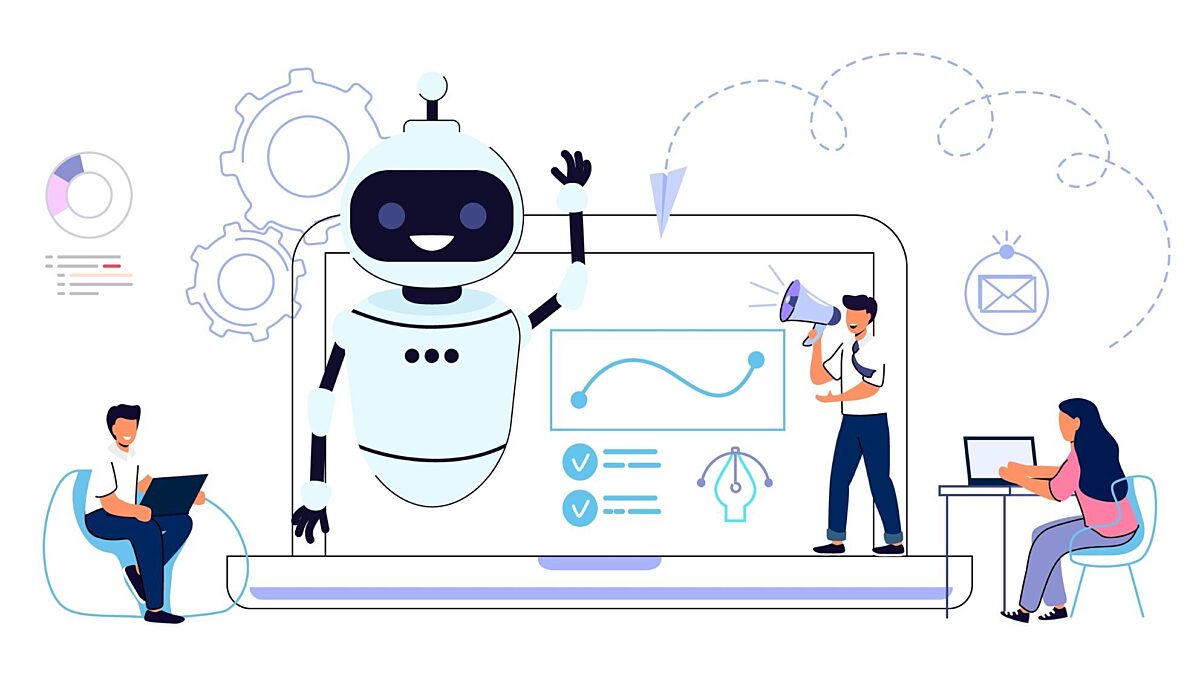Artificial Intelligence in Marketing
Artificial intelligence (AI) is dominating the news, and it seems to be powering much of current business marketing and communications.
The rapid rise of AI has left many businesses questioning whether they’re keeping up.
This article lays out the current state of AI in marketing and communication, plus offers a perspective on how to leverage it in your organization.
Types of Artificial Intelligence (AI)
When examining AI, we can categorize different types of this technology by their function and their capabilities. These categories can be further broken down as follows:
The four main types of AI by function are:
Reactive machines
Limited memory
Theory of mind
Self-aware
By capability, AI may be described as possessing:
Narrow intelligence
General intelligence
Superintelligence
Let’s look at each of these more deeply.
Four Types of Artificial Intelligence by Function
1. Reactive Machines
As the name implies, reactive machines react and respond to prompts. This form of AI does not come equipped with memory or any understanding of context.
Game designers often employ reactive memory to create opponents. The opponent responds to a player’s actions, movements, or attacks in real-time. However, it’s not aware of the overall objective of the game. In addition, it stores no information, so it doesn't learn from past experiences or adjust its gameplay.
Reactive AI is behind many popular marketing applications, such as chatbots. They use reactive AI to respond to queries with pre-programmed responses. Chatbots are used in marketing, sales, and customer service to answer common questions, provide information, and connect prospective customers with actual company representatives. Chatbots can also provide reporting on buyers and their needs, create contacts, and send follow-up emails.
Beyond chatbots, reactive AI tools can help analyze customer behavior, campaign performance, and market trends. With these insights, marketers can optimize their campaigns in real-time, which can significantly improve the return on an investment in marketing.
2. Limited Memory
Limited memory AI can learn from relatively small bits of data or feedback. However, it doesn't retain any of this information for extended periods.
A great example of limited-memory artificial intelligence is ChatGPT. It has a limit of 4,000 tokens, which are forms of text such as words. It can’t recall anything from a chat above that limit. If it exceeds the limit, it will only respond to the terms after the first 4,000.
Among other things, limited-memory technology powers self-driving cars. It detects lanes and maps the road ahead. It also adjusts driving speed and breaking in real time based on traffic patterns and road conditions.
In marketing, limited memory AI can read and analyze large amounts of data. It helps business owners make better-informed decisions about their marketing strategies and tactics. It can also make data-based predictions and recommendations.
Be aware: Limited memory algorithms are practical, but they aren't perfect. They can make mistakes, including providing inaccurate predictions. This is especially true if the data backing limited memory systems is questionable. Their output is only as good as your input. So, it's essential to supply these algorithms with accurate, relevant, and up-to-date information and double-check the result before you use it.
3. Theory of Mind
Theory of mind is still in the conceptual phase. When it becomes a reality, it will be an advanced technology that will understand the mental states of humans.
For example, if you shout at Google Maps because you make a wrong turn, it simply responds by recommending another route. It doesn’t get offended or reassure you. In the future, it may be able to—much like a person—and more.
People exploring theory of mind hope to create solutions that interact with humans more effectively. The solutions will be able to understand their needs, goals, and motivations. For example, if an AI system can understand the frustrations of an unhappy customer, it will respond more sensitively. Theory of mind is still so new it’s hard to really understand the impact it could have on marketing.
4. Self-Aware
Self-aware AI is the next step beyond theory of mind. When this stage becomes a reality, machines will be able to understand human emotions and have their own, too. They could also have their unique thoughts and beliefs. In other words, self-aware AI would be virtually indistinguishable from human consciousness as we know it. Currently, this type of AI is only a relatively distant concept.
M3gan, the fictional movie robot, is an example of self-aware AI. She feels things and knows who she is, and can understand the emotions of those around her. She’s awkward, like we’d expect from a robot, but maintains social interactions.
The Capabilities of Artificial Intelligence
Artificial intelligence can also be categorized by its capabilities, aligned with its ability to replicate human processes. The three types of artificial intelligence capabilities are:
Narrow Intelligence (ANI). ANI is used in most artificial intelligence-based solutions available today. It performs a defined task or set of functions. It can’t learn or adapt beyond its programming. Examples include chatbots, virtual assistants (like Siri), and solutions that deliver recommendations.
General Intelligence (AGI). AGI is the next generation of artificial intelligence. Solutions leveraging it will be designed to have human-like intelligence. It will be able to learn and adapt to new situations. It will think abstractly, reason, and solve problems. Right now, AGI is theoretical. Experts disagree as to when AGI will become a reality.
Superintelligence (ASI). ASI is an advanced form of artificial intelligence that will go beyond that of humans. It will be able to solve complex problems, build new technology, and make decisions beyond the scope of human understanding. The potential benefits and risks of ASI are currently being debated.
Different organizations may describe the capabilities of different types of artificial intelligence in their own ways, but these three categories are a sound foundation for basic understanding.
Top Uses of AI in Business Marketing and Communication
Marketing and communication technology today is based on reactive and limited memory AI, both examples of narrow artificial intelligence. Current AI-based tools are strictly reactive and could include relatively small amounts of memory.
Here are the most common uses of AI in marketing and communication.
Chatbots. Chatbots can be both reactive and limited memory AI. A rule-based chatbot following an if/then rationale and programmed with standard responses is an example of reactive AI because it follows a set structure and never deviates from it. Machine learning chatbots, like conversational ones, are limited memory AI because they leverage data and past conversations to respond to queries. They become better over time, but memory constraints limit improvements.
Visual AI tools. These solutions enable machines to identify, understand, and act on imagery and visual data similar to the human vision system.
Text generation tools. AI text generators use advanced natural language processing to analyze existing text and create something similar in content and style.
How much of the available AI marketing technology is your business leveraging? Are you prepared for what comes next? Take advantage of the information in this article to ensure you’re staying up-to-date and not falling behind the competition. AI isn’t something you should be afraid of. It’s a new form of technology you must embrace.










